Exploring Recent Extinctions: Understanding Animal Loss
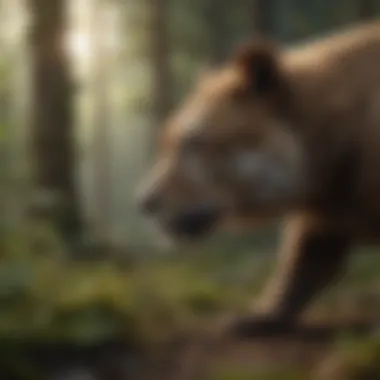

Biodiversity loss is not an isolated issue.
Machinery shifts: ecosystems depend heavily on each species' existence. Ignoring this can undermine natural systems that sustain life.
Understanding Extinction
Recognizing the phenomenon of extinction is vital for emphasizing the consequences of biodiversity loss. Extinction signifies the end of a species and the loss of its unique genetic contributions to ecosystems. Understanding this concept can aid in grasping the accelerating rates of modern extinctions, largely driven by human activities. Recent decades reveal that extinction is not just a problem of the past; it is an urgent concern that requires immediate attention.
Definition of Extinction
Extinction occurs when a species ceases to exist, often as a result of a variety of factors, including natural disasters and human impacts. The fundamental understanding of extinction can be categorized into two types: local and global extinction. Local extinction happens when a species disappears from a specific region but may thrive elsewhere. Global extinction indicates that no individuals of the species remain on Earth. Both types represent significant losses in biodiversity, impacting ecosystem health and stability.
Key Points in the Definition
- Permanent loss: Once a species is extinct, it can never return, limiting genetic diversity.
- Complex interactions: Numerous factors contribute to extinction, making it multifaceted.
- Impacts on ecosystems: The loss disrupts natural balances, affecting food webs and ecological functions.
Historical Context
Examining the historical context of extinction is essential to provide depth to current discourse. Throughout history, species have gone extinct for various reasons, such as climatic changes and habitat alteration. The mass extinctions of the past showcased significant upheavals, yet today's crisis stands as the most profound due to human influence.
While the paleontological record shows that extinction events—like the one that wiped out dinosaurs—occurred naturally, current extinctions heighten concerns about their frequency and scale. The late Holocene has significantly accelerated species loss leading many scientists to refer to the situation as the sixth mass extinction. This section aims to highlight some key trends from natural history:
- Natural extinctions: Over Earth’s 4.5 billion year history, extinction has always played a role in reshaping biodiversity.
- Anthropogenic factors: Activities such as deforestation, pollution, and climate change have intensified extinction rates over the last few centuries.
Understanding these trends helps frame current discussions concerning conservation efforts. As the impact of climate change and habitat loss continues to exacerbate species decline, increasing awareness about extinction dynamics proves critical at this juncture.
Extinction is not simply a natural occurrence; in the modern age, it predominantly reflects human actions.
Factors Contributing to Recent Extinctions
Understanding the factors contributing to recent extinctions is crucial in grasping the complexity of modern biodiversity crises. These factors intersect and create a multifaceted web of challenges that threaten animal species across the globe. Recognizing the nuances involved allows researchers and conservationists to devise informed and targeted responses aimed at preserving wildlife.
Habitat Loss
Habitat loss occurs when natural environments are altered or destroyed, primarily due to human activities such as deforestation, urban expansion, and agricultural practices. This loss disrupts entire ecosystems, leaving many species without adequate homes or resources necessary for survival. Species like the Spix's Macaw suffered greatly because their habitats in Brazil were eliminated for land use. The reduction of habitats leads to fragmented populations, which in turn decreases genetic diversity and resilience.
Climate Change
Climate change poses another significant threat to animal species. Rising temperatures, shifting precipitation patterns, and extreme weather events alter wildlife ecosystems. Some species may not adapt fast enough or find suitable conditions in new areas, risking extinction. Amphibians, for example, are especially sensitive to temperature changes and climate-related diseases. Observations suggest that many species are already affected, as seen with the drastic decline in frog populations worldwide.
Pollution
Pollution affects land, air, and water environments, rendering them unhealthy for many species. Chemicals from industrial processes contaminate ecosystems, disrupting wildlife health and behaviors. Plastics in the ocean not only physically harm marine animals but also introduce toxic substances into the food chain. Notably, the case of the Murray Darling Basin Biota illustrates how pollutants rapidly deplete aquatic life.
Invasive Species
Invasive species can substantially alter local ecosystems, as they may outcompete, prey on, or introduce diseases to native species. The impact can be devastating, often leading to reduced populations or extinction of native fauna. For example, the introduction of the mongoose in certain areas devoured bird populations that had no resources for defense against their new predator. Control of invasive species requires concerted efforts, but challenges remain due to their adaptability.
Overexploitation
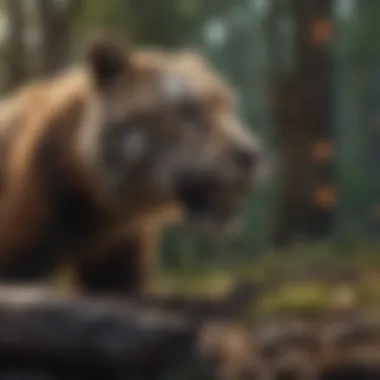

Overexploitation through hunting, fishing, and trade poses a danger to various species. When animals are harvested faster than they can reproduce, it risks collapse of their populations. For instance, sea turtles are poached for their shells and eggs. The demand for wildlife products makes conservation efforts much more difficult. Even previously stable populations become vulnerable to rapid declines under societal pressure for resource consumption.
Recent Notable Extinctions
The topic of recent notable extinctions is crucial in understanding the larger narrative of biodiversity loss. Each extinction tells a unique story that reflects the challenges faced by species and ecosystems today. By examining specific cases, one gains insights not only into the circumstances surrounding these losses but also into the broader conservation implications. Recognizing such extinctions is about more than just acknowledging lost species; it embodies a call to action, urging society to mitigate the threats that drive these losses. We can reflect on the value of each species and question the sustainability of our practices that lead to such irrevocable tragedies.
Spix's Macaw
Spix's Macaw, once native to Brazil, provides a poignant example of recent extinction pressures. Once thought to be extinct in the wild as of 2000, these striking blue birds were heavily impacted by habitat destruction and illegal trapping. While they were saved from complete extinction through captive breeding, the loss of their natural habitat and reduced population figures still pose major challenges for successful reintroduction. The efforts to revive the Spix's Macaw underline the critical importance of habitat restoration policies and the adverse effects of human activities.
The Jaladri's Frog
The Jaladri's Frog, endemic to extensive wetland areas of Southeast Asia, faced a sudden decline attributed largely to habitat destruction and climate change impacts. This species captures attention because its loss could signal shifts in ecosystem health, given its sensitive nature to environmental changes. The disappearance of such amphibians often illustrates wider environmental issues, suggesting urgent action is necessary not just for frogs but for coherent strategies affecting all species within fragile ecosystems.
The Pinta Island Tortoise
The Pinta Island tortoise marks a significant loss of genetic diversity among tortoises in the Galápagos Islands. Known for its characteristic dome-shaped shell, this species fell victim to exploitative human activities and invasive species that disrupted its survival. The last known individual, Lonesome George, passed away in 2012, exemplifying the finality of extinction in a tangible form. This serves as a reminder---once a species is gone, its ecological role, genetic contributions, and unique characteristics vanish as well.
Murray Darling Basin Biota
In Australia, the Murray Darling Basin biota showcases diverse life forms, many of which face the epistemic threat of extinction. Various aquatic species are experiencing accelerated losses due to factors like water mismanagement, agriculture pollution, and climate pressures. The critical state of this assemblage underscores how interconnected aquatic systems are and how they warrant comprehensive joint management strategies which would ultimately improve ecosystem protection and restoration actions.
The Golden Toad
The Golden Toad of Costa Rica is perhaps one of the most emblematic recent extinctions underpinned by climate change impacts. Last seen in the 1980s, it symbolizes how quickly a vibrant population can collapse under shifting environmental conditions. The very existence of this species called attention to the wider impacts of non-stational temperatures and precipitation patterns affecting other amphibians globally. As we look towards solutions, studying cases like the Golden Toad can help prioritize areas for further investigation and conservation measures.
Understanding these recent extinctions is crucial because they not only remind us of our ecological duties but also prompt stronger advocacy for traditional conservation efforts. Each case involves a broader set of environmental challenges that reflect humanity's influence on the natural world.
In summary, notable recent extinctions speak to different dimensions of ecological degradation. They also stress the need for enhanced global awareness, as these losses underline a common threat to presently endangered species around the globe.
Implications of Animal Extinction
Animal extinction carries severe implications that extend beyond the tragic loss of individual species. Understanding these implications is crucial for informing conservation strategies and raising public awareness. Each extinction event functions as a reminder of humanity's impact on the planet and can catalyze necessary discussions around environmental responsibility.
Biodiversity Loss
Biodiversity refers to the variety of life on Earth, encompassing the different species, ecosystems, and genetic variations. The loss of biodiversity destabilizes ecosystems, leading to their inability to provide essential services. A clear example is the decline of pollinators, which severely impacts agricultural productivity. In many cases, the extinction of one species can trigger a chain reaction, affecting numerous other species, resulting in broader ecological deficits.
Ecosystems thrive on complex relationships among species and their environments. When key species are lost, these connections break down. The disappearance of apex predators can lead to overpopulation of herbivores, which in turn depletes vegetation and alters the landscape. This scenario exemplifies why preserving biodiversity is not simply a matter of conserving beautiful creatures; it is vital for maintaining ecological balance.
Furthermore, genetic diversity within species is essential for adaptability. As environmental conditions change, species may need to adapt swiftly to survive. Reduced genetic diversity can limit this capacity for adaptation, pushing species toward further decline.
Ecosystem Disruption
Extinctions contribute significantly to ecosystem disruption. Ecosystems are intricate webs of interactions and dependencies. When a species goes extinct, the immediate and ripple effects can be intense.
For instance, corals support immense marine life diversity. Their depletion not only affects the species that directly rely on them but can collapse entire reefs. These reefs play a critical role in coastal protection and provide livelihoods for millions. Without healthy ecosystems, the physical structure and function of the environment deteriorate.
The consequences of ecosystem disruptions additionally feed into one another. As predators disappear, the effects can reverberate through the food chain, leading to unforeseen consequences across multiple levels of ecological interactions. This domino effect emphasizes the interconnectedness of life and the systemic impacts of losing any single species.
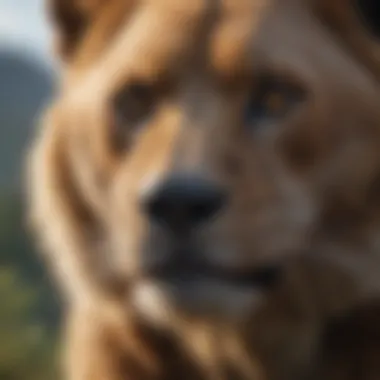
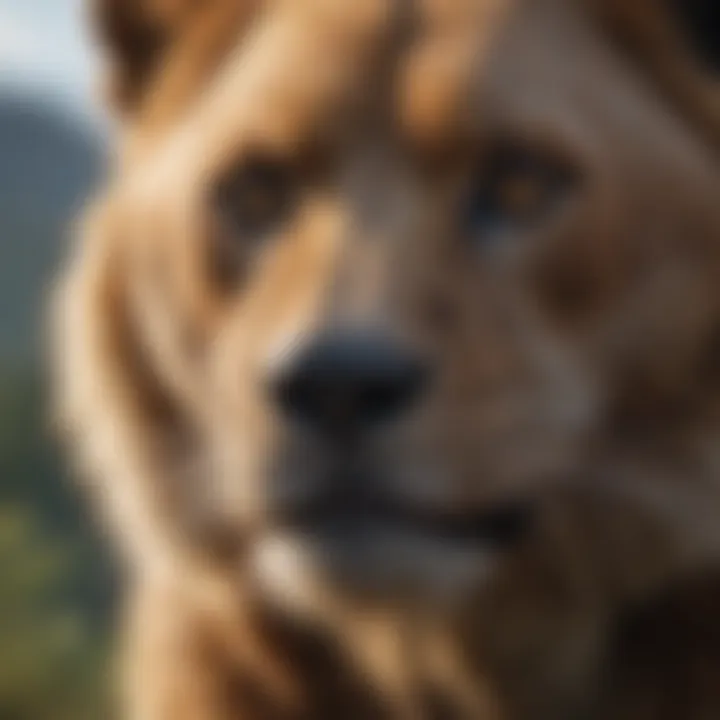
Economic Consequences
Animal extinction bears substantial economic consequences as well. Discripancies within ecosystems affect industries that rely on natural resources. For example, fishing, tourism, and agriculture are all directly linked to biodiversity.
The decline of fish populations due to habitat destruction undermines commercial fisheries. Touristic attractions that depend on wildlife viewing are diminished. Economic impacts are not limited to local scales but can connect to global markets. Millions depend on biodiversity for their livelihoods, particularly in vulnerable regions. Economic stability is thus closely linked to the health of local ecosystems.
“The loss of biodiversity puts at risk the ecological partners necessary for food, medicine, and economies on which humans thrive.”
In addition, governments may face increased costs related to ecosystem restoration and management. The decline of ecosystems may demand more significant investment to rehabilitate affected areas, diverting funds from other crucial sectors. In the long run, the cumulative economic costs of animal extinctions may prove significantly detrimental against the backdrop of human progress.
Applying a proactive approach to preserving animal populations is essential. With urgent and coordinated effort, society may work toward softer impacts on biodiversity, ensuring both environmental stability and economic security. Through education and advocacy, all stakeholders—governments, conservation organizations, and individuals—can contribute to a robust framework for biodiversity conservation.
Conservation Strategies
Conservation strategies play a crucial role in the battle against recent animal extinctions. These approaches encompass a variety of methods aimed at protecting endangered species and restoring their natural habitats. Effective conservation can mitigate the alarming trend of biodiversity loss which has become prevalent in recent decades. Successful strategies often require collaboration among governments, NGOs, communities, and scientists. Moreover, there should be a clear understanding of the various elements embedded within these strategies to tackle this complex issue comprehensively.
Legal Protections
Legal protections are one foundational element of conservation strategies. Laws and regulations provide essential frameworks which aim to safeguard species and their habitats. Among some of these protections are the Endangered Species Act in the United States and the Convention on International Trade in Endangered Species of Wild Fauna and Flora (CITES).
These laws not only limit harmful activities such as poaching but also establish critical habitats to help populations recover. Another key aspect is enforcement. Without proper enforcement mechanisms, legal protections become merely symbolic. Investing in training and resources for monitoring can crucially enhance the effectiveness of these laws.
Strong legal protections are essential for any effective conservation strategy. They serve as both a deterrent to harmful actions and a safeguard for ecosystems.
Restoration Efforts
Restoration efforts provide additional pathways to recover ecosystems that have been degraded by human activity. Habitat restoration involves rehabilitating landscapes to their natural state, allowing native species to thrive again. This process can involve removing invasive species, reintroducing native flora, and even creating wildlife corridors.
In addition, engaging in species-specific recovery plans can also see populations bounce back from the brink of extinction. Each restoration plan must be tailored to the species in question. Understanding the biology and ecology of an endangered species is essential for developing an effective recovery strategy. For instance, conservationists may need to employ techniques like captive breeding to boost declining populations.
Community Involvement
Community involvement serves as another vitally important aspect of conservation strategies. Local communities often hold valuable knowledge about their environment, which can drastically enhance conservation efforts. Education initiatives can raise awareness, helping residents understand the importance of preserving biodiversity.
Furthermore, engaging communities can lead to the development of stewardship programs. When people feel a sense of ownership over local environments, they tend to become advocates for conservation. This can manifest in many forms, including volunteering for cleanup projects or participating in citizen-science programs. Ultimately, community involvement can foster sustainable practices that protect local species while supporting human populations.
In summary, conservation strategies represent a multi-faceted approach to combatting animal extinctions. Legal protections lay the foundation, restoration efforts rehabilitate ecosystems, and community involvement reinforces these strategies from the ground up.
Public Awareness and Education
Public awareness and education play a crucial role in addressing the issue of recent animal extinctions. Understanding the realities of extinction is essential for engaging broader audiences in conservation efforts. Many people may not realize how their daily choices affect wildlife, plant diversity, and global ecosystems. It is way too easy to overlook the connection between their actions and the fate of threatened species. Raising awareness can mobilize individuals and communities to engage in meaningful activities that support biodiversity conservation.
Education serves as a bridge between scientific knowledge and public engagement, effectively translating complex ideas into easily digestible information. Numerous studies indicate that informed communities are more likely to participate in advocacy and take proactive steps to preserve natural habitats. When individuals understand the ecological roles of various species and the intricacies of ecosystems, they’re better equipped to appreciate the benefits of conservation.
Role of Media
Media holds a significant position in shaping public perception surrounding extinction and biodiversity loss. From environmental documentaries to news features on the plight of endangered species, the media can illuminate issues that may otherwise remain hidden. They can highlight recent extinctions and clarify the span of human impact on ecosystems, triggering an emotional response that often fuels public action.
In the digital age, social media plays an equally vital role. Platforms like Facebook and Reddit create a space for community dialogue. People can share personal stories, mobilize support for conservation strategies, and advocate for policy changes. Shared viral media not only educates but also encourages people to sign petitions or participate in local initiatives aimed at conservation.
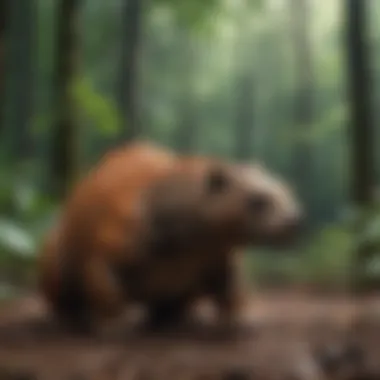

Future of Conservation
The future of conservation is paramount to understand the trajectory of our planet's biodiversity. As we face rapid species loss and changing ecosystems, innovative solutions and collaborative efforts become crucial. This section addresses significant elements, benefits, and considerations necessary for effective future conservation strategies.
Innovative Approaches
Conservation strategies must evolve to meet the demands presented by current challenges. The adoption of innovative approaches plays a vital role in this evolution. Emerging technologies like genetic restoration and artificial intelligence can provide new pathways to conserve endangered species.
Genetic restoration involves using advanced breeding techniques to revitalize genetic diversity among dwindling populations. For instance, scientists can utilize techniques like CRISPR to help restore endangered species' genomes, combating the loss of genetic variation that leads to vulnerabilities in population.
Similarly, applying artificial intelligence enables better monitoring of wildlife populations. Data analytics can enhance understanding of animal behaviors and habitats, thereby informing proactive conservation measures. Use of drones and camera traps, equipped with AI, can provide real-time monitoring of species without significant human interference.
Other methods include community-based conservation and altering land-use practices. By incorporating local knowledge, conservation becomes more effective and sustainable. Programs aiming to engage local communities have shown improved outcomes in protecting biodiversity.
International Cooperation
International cooperation can amplify conservation efforts by fostering shared understanding and pooled resources. The issue of biodiversity loss transcends national borders, requiring collective action. Treaties and collaborations among governments, non-profits, and stakeholders have proven to be effective in many cases.
One prominent example is the Convention on Biological Diversity, which aligns national policies to preserve biodiversity. This global treaty highlights the need for countries to establish and follow common goals to tackle extinctions effectively.
In addition, partnerships between different countries can lead to significant success in conservation projects. For instance, the United Nations Environment Programme brings together various nations to implement ambitious programs aimed at restoring degraded ecosystems and protecting endangered species.
Engaging the public and raising awareness through social media and educational outreach fosters wider participation in these international efforts. Connecting individuals and communities through platforms like Facebook or subreddits dedicated to environmental actions creates support networks that positively influence worldwide conservation initiatives.
“International cooperation on conservation initiatives enhances effectiveness and drives substantial progress in safeguarding biodiversity.”
To summarize, innovations and international collaborations play crucial roles in shaping the future of conservation. Both strategies have a significant potential to combat the rapid loss of species and promote a sustainable relationship with nature.
Call to Action
Taking action on the issue of animal extinction is imperative. Each individual plays a vital role in shaping the outcome of biodiversity preservation. Ignoring this need may result in more species disappearing at alarming rates. Small, everyday choices can have significant, cumulative impacts on conservation efforts.
Education and mindfulness are essential. When people understand the factors leading to extinction, they are more empowered to make informed decisions. Knowledge about the environment often translates into action. There is power in collective initiative. Each individual's efforts can add up to sizeable change.
We can no longer be passive observers. Everyone can contribute to efforts that ultimately seek to sustain the ecological balance required for our planet. Moreover, a heightened sense of duty can create ripples across communities to commit actively against extinction crises.
"The future of conservation rests not only on authorities but on the combined efforts of every member of society."
Personal Responsibility
Every person bears responsibility for fostering a healthier planet. Adopting sustainable practices in daily life can mitigate human-induced pressures on wildlife. Simple choices like reducing plastic usage or supporting local produce reduce habitat destruction and pollution.
Here are effective measures individuals can take to fulfill their responsibility:
- Choose Sustainable Products: Opt for eco-friendly items that have minimal negative impacts on the environment.
- Reduce Waste: Emphasizing recycling and reusing items helps limit the demand for new products, lessening ecological strain.
- Promote Awareness: Talk about biodiversity with friends, families, and peers. Engage others in important discussions about conservation.
- Volunteer: Participate in local conservation projects or assist NGOs devoted to wildlife protection.
By implementing these steps, we each make significant contributions to mitigating extinction threats.
Supporting Conservation Initiatives
Support for organizations working toward conservation is invaluable. Donating time or resources to conservation initiatives can amplify their efforts. Non-profits and governmental bodies focus on critical strategies that aim to safeguard endangered species.
Consider these practical ways to offer support:
- Financial Contributions: Donations to reputable organizations provide essential funding for projects aimed at wildlife preservation. Consider donating to organizations like WWF or The Nature Conservancy.
- Advocacy: Use social media platforms to raise awareness for endangered species. Engage with and encourage others to take action through your stable holight.
- Join NGO Campaigns: Getting involved in campaigns, signing petitions, or joining letter-writing drives can be a powerful way to lobby for necessary legislation.
Bottom line, every effort made counts. Supporting conservation initiatives prioritizes the health of Earth's ecosystems now, and for future generations.



